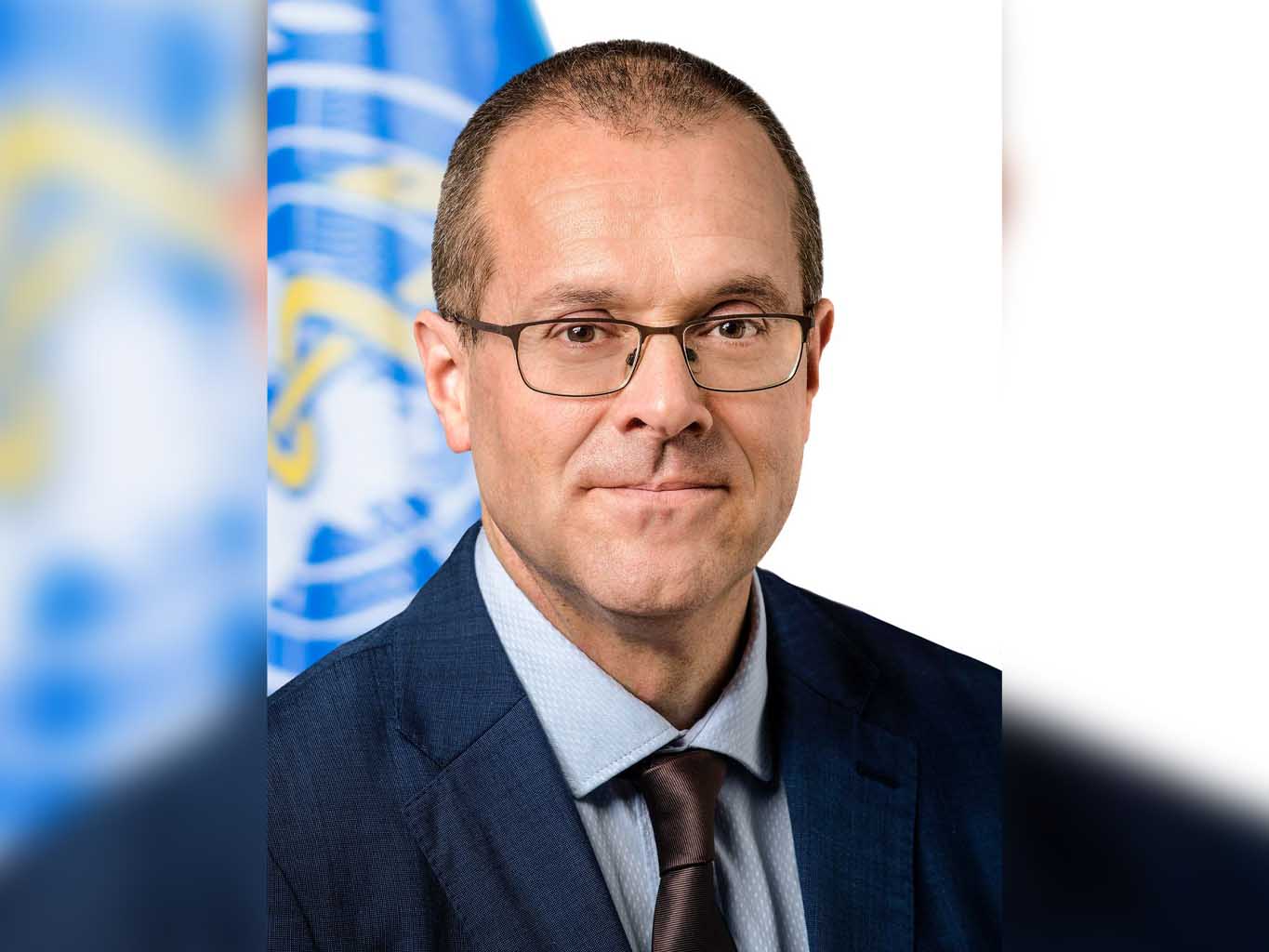In the run-up to the Central Asia International Health Investment Forum in Kyrgyzstan, the WHO Regional Director for Europe, Dr. Hans Henri P. Kluge, speaks about WHO’s cooperation with the Government of Turkmenistan in the field of health, the importance of investment in health, the successes achieved and the joint work in accelerating progress towards achieving SDG 3.
As we know, the CA Health Investment Forum aims at increasing investment to accelerate progress towards achieving Sustainable Development Goal 3 across Central Asia. Could you specify which health sectors are currently lagging behind and need more investment?
Let’s be clear from the outset: investing in health is an investment in the future of our countries and societies. The two-day Central Asia International Health Investment Forum, beginning tomorrow in Bishkek, Kyrgyzstan, will serve as a crucial platform for discussing and driving healthcare investments across the region.
The primary objective of the forum is threefold: to build new partnerships for health investment projects and technical assistance; to share best practices for achieving health-related Sustainable Development Goals (SDGs); and to emphasize the importance of investing in health as a catalyst for sustainable development, in line with the Roadmap for Health and Well-being in Central Asia.
Central Asia is a unique region, home to 76.5 million people and a demographic powerhouse with 30% of its population aged 14 years or under. This makes investing in healthcare here even more critical, especially after the COVID-19 pandemic exposed the vulnerabilities in both our local and global health systems and economies. With pressing health challenges like the rapid spread of HIV and tough-to-treat tuberculosis, the region needs robust health systems more than ever, which can only be built through strategic investments and strong international cooperation.
From 1 January 2022 until 30 March 2024, WHO Regional Office for Europe has mobilized a total of USD101,780 million to support health initiatives in the Central Asian region, including over USD8 million in Turkmenistan. But there is a shared understanding that we need to do much more to strengthen health systems and achieve health-related SDGs.
Investing in health doesn’t just make us healthier – it also makes our economies more stable and ensures regional security. So, this Forum represents a major step toward a healthier and more stable future for everyone in Central Asia.
Taking this opportunity, I would like to express my heartfelt gratitude to the President of Kyrgyzstan Sadyr Zhaparov and Health Minister Alymkadyr Beyshenaliyev for their close collaboration with the WHO Regional Office for Europe and our Country Office in Kyrgyzstan, led by Liviu Vedrasco, as well as for supporting our regional health initiatives. Health is truly a collective effort and I very much look forward to our continued collaboration in the years ahead.
How does WHO support Turkmenistan’s healthcare system in accelerating progress towards achieving SDG 3?
WHO actively supports Turkmenistan’s healthcare system through the Country Cooperation Strategy (CCS) for 2024-2028, developed in collaboration with Turkmenistan’s Ministry of Health and Medical Industry. This strategy outlines a comprehensive framework for strengthening healthcare and advancing towards Sustainable Development Goal 3 (SDG 3), which focuses on good health and well-being.
Central to this support is the alignment with the European Programme of Work, targeting WHO’s triple billion goals as set out in the 13th and 14th WHO General Programme of Work (GPW).
The CCS prioritizes several key areas: achieving universal health coverage, strengthening health systems through the development of primary health care and digital solution, enhancing public health emergency preparedness with a “One Health” approach, reducing the health impacts of environmental factors, and bolstering the management of non-communicable diseases (NCD) and mental health services. It also emphasizes food safety, communicable disease control through immunization, and enhancing regional health cooperation.
This multifaceted support involves capacity building, technical assistance, and policy development tailored to the specific health priorities of Turkmenistan, aiming to expedite progress towards achieving good health and well-being for all.
Turkmenistan has recently met the regional targets for eliminating hepatitis B through vaccination efforts. Do you believe that other forms of viral hepatitis can be eradicated in the region through vaccination and immunization by 2030?
Hepatitis represents a significant public health burden in the WHO European Region. As of 2019, an estimated 14 million people were infected with the hepatitis B virus and 13 million were chronically infected with hepatitis C virus in the region.
Turkmenistan’s achievement in meeting regional targets for eliminating hepatitis B through vaccination is commendable and a significant step towards public health safety. This success illustrates the power of comprehensive vaccination programs in controlling viral diseases.
With support from WHO, the Ministry of Health of Turkmenistan developed a “Strategic Plan on Strengthening Control Measures for Viral Hepatitis in Turkmenistan for the Period of 2019-2030”. The country has also introduced vaccines against hepatitis B and hepatitis A into its national immunization schedules.
While hepatitis B and D can be effectively managed with vaccines, the scenario for other hepatitis viruses, notably hepatitis C and E, is more complex due to the absence of available vaccines. Therefore, the eradication of these forms through vaccination by 2030 appears unlikely. However, hepatitis A, which also has a reliable vaccine, shows potential for similar success as seen with hepatitis B, provided there is widespread adoption of vaccination strategies.
For hepatitis C, which has no vaccine, eradication efforts must focus on improving access to effective antiviral treatments. These treatments have been shown to cure a high percentage of cases. By combining these treatments with comprehensive testing and prevention strategies, we can significantly reduce the incidence and public health impact of hepatitis C.
Ultimately, achieving the WHO’s ambitious goal of ending viral hepatitis as a major public health threat by 2030 will require a multifaceted approach. This includes sustained commitment to vaccination where feasible, enhanced access to treatment, and robust public health strategies to reduce transmission. The success in controlling hepatitis B in Turkmenistan and other nations offers a blueprint for expanding efforts to other forms of hepatitis.
Why is Youth4Health Initiative so important and what kind of activities or events does WHO/Europe plan to organize with Turkmen youth under the initiative?
The WHO Regional Office for Europe’s Youth4Health Initiative aims to amplify and embed youth voices and perspectives into all aspects of work of the regional office. The initiative is essential because young people are key to addressing the profound public health challenges we face today and building a sustainable future. In the WHO European Region, where every third person is under 30, engaging this demographic is not just beneficial but necessary.
Young people bring innovation and are eager to challenge the status quo. Therefore, their involvement is crucial in shaping health policies and practices that are inclusive and forward-thinking. The Youth4Health network, a mechanism under the Youth4Health initiative, provides a structured platform for this engagement, ensuring that young voices are not only heard but are also influential in decision-making processes.
In Turkmenistan, we are actively involving youth through various activities planned under this initiative. With institutions like the Turkmen State Medical University joining the network, we are strengthening our collaborative efforts. Activities planned with Turkmen youth include inviting them to engage in the creation of health campaigns and publications, and co-creating events where they can serve as speakers, panelists, and co-leaders in developing session agendas.
Furthermore, we facilitate youth participation in high-level decision-making processes, including the preparation of youth-led declarations for Ministerial meetings and contributions to the WHO Regional Committee for Europe.
Starting in September this year, we are also opening opportunities for youth to contribute to initiatives aimed at accelerating progress towards the SDG targets related to NCDs. These include ideation sessions and collaborative projects to enhance NCD resilience.
Through these varied engagements, the Youth4Health network not only empowers young people, but ensures that their innovative potential significantly contributes to improved health and well-being outcomes across the region.







